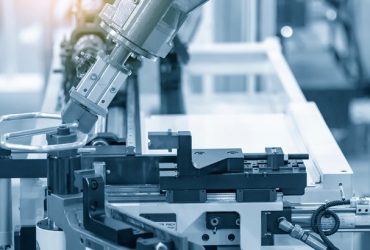Governments all over the world have realized the crucial relevance of Research and Development (R&D) activities in the quickly changing business environment of today, which is characterized by an unyielding drive for innovation and competitiveness. They created the Research and Development (R&D) Tax Credit, a vital benefit that pays businesses for their efforts in R&D projects, to encourage and reward innovation.
Despite all the potential advantages, submitting a claim for this tax credit is frequently difficult and time-consuming. It might be difficult to find acceptable R&D activity, meticulously record spending, and follow strict regulatory regulations, diverting resources away from the innovation it seeks to promote.
Enter R&D tax credit software, a revolutionary tool created to improve and streamline the entire procedure. In this article, we set out on an adventure to investigate the crucial role that automation plays in R&D tax credit software and how it is changing how businesses see tax credits.
The Complexity of R&D Tax Credits
Before we delve into the remarkable benefits of automation in R&D tax credit software, let’s take a moment to appreciate the intricate nature of R&D tax credits themselves. These incentives are not merely financial rewards but a testament to the pivotal role innovation plays in the business world. However, navigating the landscape of R&D tax credits manually can be akin to traversing a labyrinth.
R&D tax credits demand precision in identifying and documenting qualified R&D activities, meticulous tracking of associated expenses, and unwavering compliance with intricate regulatory requirements. The stakes are high, and the margin for error is slim. A misstep in this labyrinthine process can lead to missed opportunities or, at its worst, trigger IRS audits—an outcome every business diligently seeks to avoid.
Enter Automation
This is where the true power of automation within R&D tax credit software shines. Automation stands as a guiding light, illuminating the path to efficiency and accuracy in the world of R&D tax credit claims. Let’s explore how automation becomes the linchpin that not only simplifies but revolutionizes this intricate process:
- Data Collection and Integration
Manual data collection is a laborious and error-prone task. R&D tax credit software, with its automation prowess, seamlessly integrates with your financial systems. It tirelessly collects and categorizes the necessary financial data, leaving no room for data entry errors. This automation not only saves time but also ensures that your financial data is consistently accurate.
- Expense Tracking and Documentation
Accurately tracking and documenting eligible expenses is a foundational pillar of R&D tax credit claims. Automation within the software guarantees that every qualifying expense is meticulously captured and correctly categorized. Furthermore, it maintains a comprehensive audit trail—an indispensable requirement for regulatory compliance.
- Calculation Accuracy
The calculations involved in determining R&D tax credits can be complex, involving intricate formulas and stringent rules. R&D tax credit software takes on this mathematical challenge with unwavering precision, significantly mitigating the risk of miscalculations that could result in underclaims or overclaims.
- Reporting and Documentation
Generating the requisite reports and documentation for tax authorities becomes a seamless process with automation. The software adeptly produces the necessary forms and reports, ensuring that your submission is not only complete but also fully compliant with regulatory requirements.
- Compliance Checks
Modern R&D tax credit software often comes equipped with built-in compliance checks. These checks serve as a safeguard, ensuring that your claims align perfectly with the latest regulations. This proactive approach reduces the risk of non-compliance and the potential penalties that may follow.
The Benefits of Automation
The advantages of automation within R&D tax credit software are unmistakable:
- Time Savings: Automation drastically reduces the time needed to prepare and submit R&D tax credit claims, liberating your team to channel their energies into innovation instead of grappling with paperwork.
- Streamlined Processes: Automation handles time-consuming tasks such as data collection, categorization, and calculations swiftly and accurately. This not only reduces the time spent on administrative work but also accelerates the overall claims process.
- Faster Decision-Making: With automation providing real-time data and insights, your team can make informed decisions promptly. This agility is particularly valuable when adapting to changing R&D priorities or seizing new opportunities.
- Quick Responses to Audits: In the event of an IRS audit, automation ensures that you have organized, up-to-date records readily available, expediting the audit process and reducing its disruption to your operations.
- Accuracy: Automation is the antidote to errors, guaranteeing that your claims are not only submitted promptly but also with pinpoint accuracy and full compliance.
- Elimination of Data Entry Errors: Manual data entry is susceptible to errors, such as typos or omissions, which can lead to inaccuracies in your claims. Automation ensures data accuracy by seamlessly integrating with financial systems and eliminating human error.
- Precise Calculation: Calculating R&D tax credits involves intricate formulas and compliance rules. Automation executes these calculations with unwavering precision, significantly reducing the risk of miscalculations that could result in underclaims or overclaims.
- Consistent Compliance: Automation incorporates built-in compliance checks that ensure your claims adhere to the latest regulations. This not only minimizes the risk of non-compliance but also helps you avoid potential penalties.
- Cost-Efficiency: While there might be an initial investment in acquiring the software, the long-term cost savings and the potential for increased tax credits more than justify the initial outlay.
- Reduced Administrative Costs: Automation streamlines the R&D tax credit claim process, reducing the administrative burden on your team. This translates into fewer labor hours spent on paperwork and more time allocated to productive and revenue-generating activities.
- Optimized Tax Credits: By minimizing errors and maximizing the accuracy of your claims, automation helps you capture the full extent of eligible tax credits. This often results in increased tax credits that outweigh the initial investment in the software.
- Comprehensive ROI: Consider the investment in R&D tax credit software as a long-term strategy. Over time, the software not only pays for itself but also generates ongoing returns in the form of reduced tax liabilities and increased financial stability.
- Scalability: R&D tax credit software is designed to scale alongside your business, seamlessly accommodating your expanding R&D endeavors as your company grows.
- Adaptable to Growth: As your business expands and your R&D efforts evolve, automation within the software easily adapts to your changing needs. It can handle larger volumes of data, increased claim complexity, and a growing number of eligible activities.
- Effortless Integration: Scaling often involves integrating new systems and processes. R&D tax credit software is designed to integrate smoothly with your existing financial and accounting systems, ensuring a seamless transition as your business grows.
- Futureproofing: By embracing automation and scalability, you’re future proofing your R&D tax credit processes. This means you’re well-prepared to take advantage of future opportunities and navigate any challenges that arise as your business continues to thrive and innovate.
In today’s fast-paced business environment, where efficiency and precision reign supreme, R&D tax credit software, with its automation capabilities, stands as a formidable ally. It not only simplifies the labyrinthine process of claiming tax credits but also unlocks the full potential of your R&D investments.
By harnessing the power of automation, businesses can ensure that they receive the tax credits they rightly deserve while alleviating the administrative burdens. This liberation ultimately allows them to focus on what truly matters: innovation and growth.
Therefore, it’s time to consider the integration of R&D tax credit software into your financial workflow—an initiative that promises to streamline your R&D tax credit journey and secure the rewards of your relentless pursuit of innovation.










